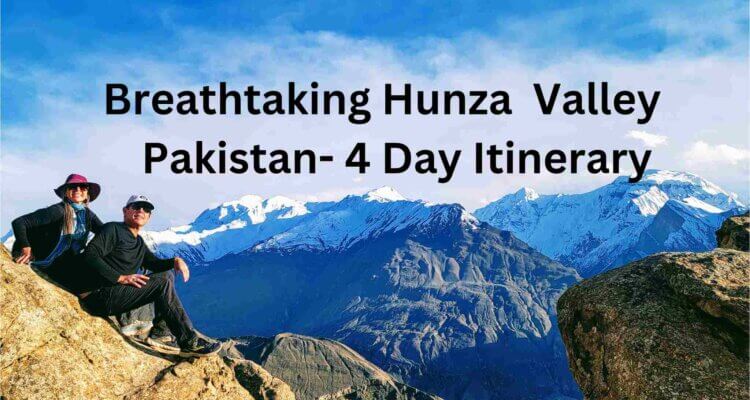Hunza Valley Pakistan is a breathtaking valley located in the Karakoram Mountains in the north of the country. It is known for its stunning scenery, including snow-capped mountains, lush green valleys, and sparkling lakes. Hunza Valley is also home to some of the tallest and most savage mountains in the world.
In addition, this area has a number of historical and cultural sites, making it a popular destination for tourists from all over the world.
Read on to find out why this is one of our 10 favorite places in the world and about all the things to do in Hunza Valley as this is our Hunza Valley Travel Guide.
Getting Here – Hunza Valley Pakistan
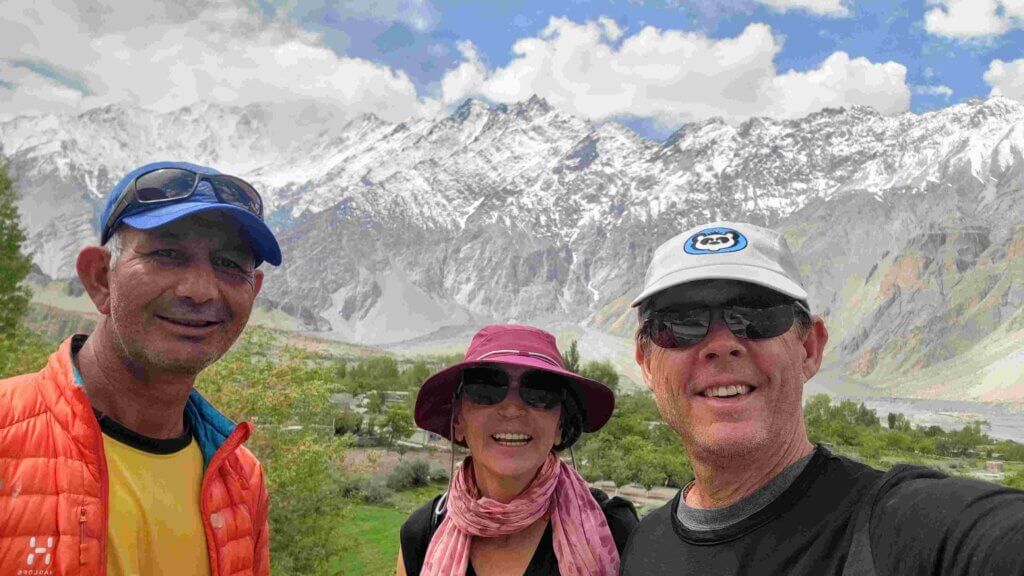
Getting to Hunza Valley is no easy task. There are so many obstacles and steps that we had to go through! We hope to save you some angst by sharing some of our mistakes and missteps so that you have a smooth and well planned trip to visit Hunza Valley Pakistan.
Visa
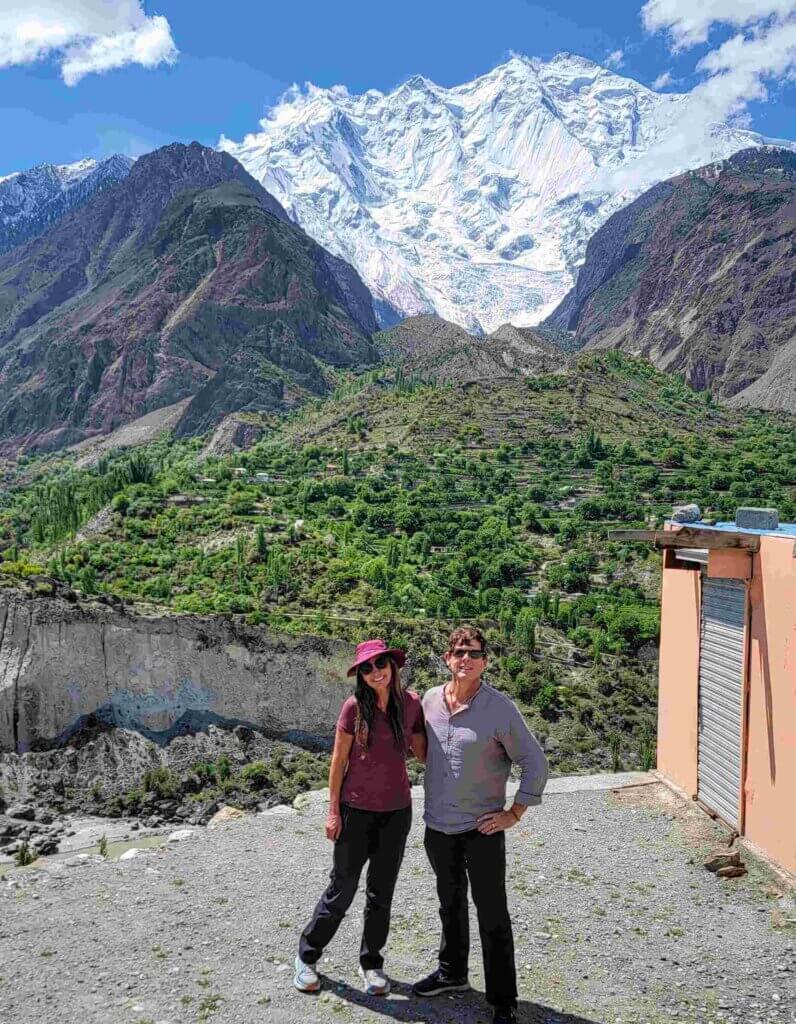
Our goal was to travel to Islamabad, then to visit Hunza Valley and then overland to Afghanistan through Peshawar. We contacted one of the top guides for Afghanistan (who is actually Pakistani) to secure that part of our travels. Little did we know that getting the Pakistan visa was going to be much harder (for us) than the Afghan one!
The “guide” suggested that we did not require the LOI (letter of invitation). And that we should just supply our Islamabad hotel information for the Pakistan visa. That was mistake number one.
First of all, the Pakistan visa site is very difficult to manage from the road. From faulty wife/data, to VPNs that mostly do not work, to difficulty with certain search engines – we had all of these issues. Second of all, Pakistan does require an LOI.
It took 2 weeks to get the notice from the embassy. Our “guide” then supplied us with an LOI. Another week passed for us to get the notice that the LOI supporting documentation was expired. The “guide” then supplied another LOI which was too blurry, then the embassy said that the LOI was fake. Each step took many days to weeks. At this point we only had 5 days until our flights into Islamabad and still no visa.
Flights had to be changed, as we feverishly re-arranged all of our travel. So one must visit Hunza Valley with a trusted guide. Here are the lessons that we learned.
Lessons learned:
- Know who to trust. We can highly recommend the company that we ultimately went with; Adventure Tours Pakistan. They were truly amazing from every angle – price, professionalism and communication. And our guide Ilyas Khan was the best guide we have ever hired. Bar none.
As an aside, the “guide” that supplied us with misinformation and faulty LOIs for Pakistan (ultimately causing us to change all of our flights, etc.,) is the same guide that threatened to “report” us to the Taliban if we did not use his services in Afghanistan.
2. A reputable company like Adventure Tours Pakistan is not going to charge you for an LOI (that is part of the tour).
3. Use Google Chrome in incognito mode while uploading documents for the PAK visa.
3. Use a good VPN while uploading documents for the PAK visa.
4. Save some money and only choose the single entry option for the PAK visa. They offer the multiple entry option but never issue it.
Fly or Drive to Visit Hunza Valley?
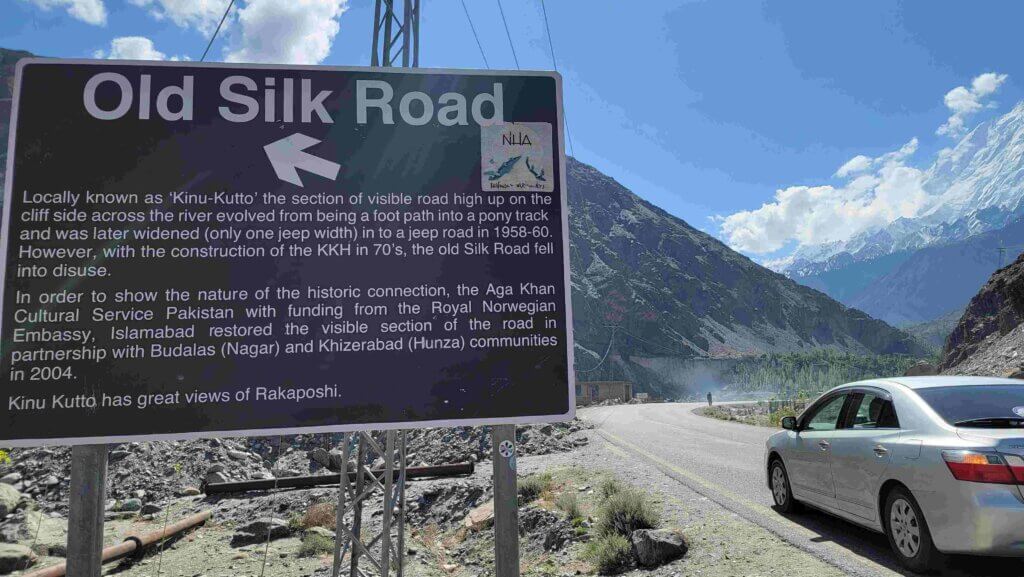
There are daily flights to Gilgit from Islamabad. However, 50% of these flights get cancelled due to weather issues. If there is even a cloud in the sky in Gilgit, that days flights will most likely be cancelled. It is just too dangerous to make that landing.
However, if the flight arrives in Gilgit, it will most likely take off to go back to Islamabad.
PRO TIP:
- Don’t expect your flight to be rescheduled. If it was cancelled, you will need to book another flight. And don’t expect to get reimbursed for your lost flight. We had to fight with Pakistan Airlines and ultimately filed a claim with our credit card company.
- Give yourself an extra day before international flights out of Islamabad to allow for these cancellations/delays.
From Gilgit it is still a 2 – 2.5 hour drive to Hunza Valley. There will be many places to stop to enjoy the views of the various mountain peeks along the way.
We were fortunate to catch a flight to Gilgit however the return flight was cancelled (and there wasn’t even a cloud in the sky)! We started our drive at 6:30 am and arrived in Islamabad at 7:30 pm. We stopped for no more than 30 minutes. And the drive was gorgeous!
We really enjoyed both the flight and the vistas of the drive back. However driving both ways would have been tough.
4 Day Itinerary Hunza Valley
DAY 1: Islamabad – Gilgit- Hunza Valley
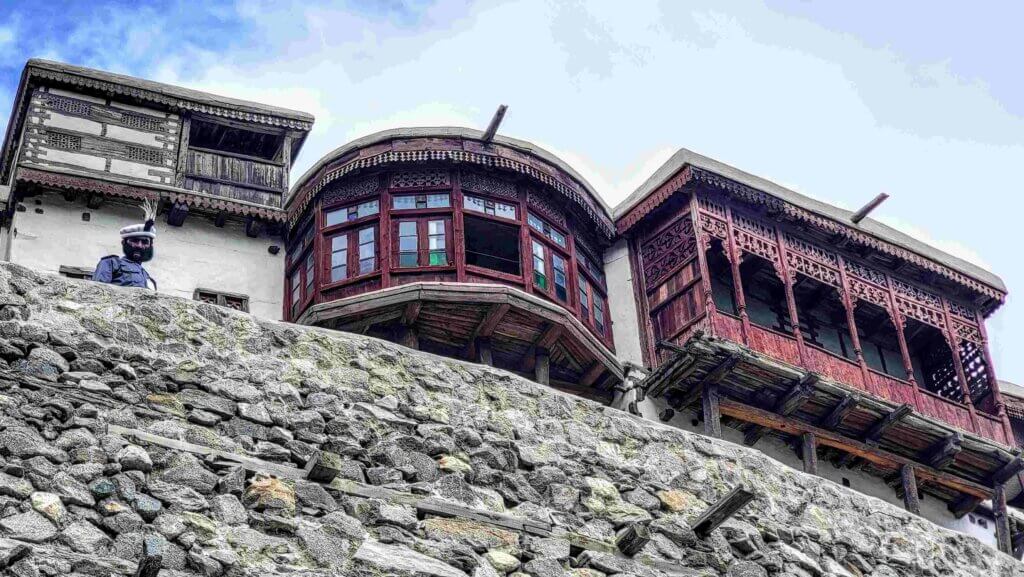
Islamabad -Gilgit: 1 hour flight
Gilgit-Karimabad: 2 hour drive
- Drive to Karimabad Hunza
- Stop at Rakaposhi View Point Ghulmet
- Karimabad Bazaar
- Baltit Fort
- Walk along Barbar Water Channel
- Overnight stay at Hill Top Karimabad
Baltit Fort

Baltit Fort is a 900-year-old fort located near the town of Karimabad, in Hunza Valley. The fort was originally built by the Buddhists in the 8th century AD, and it was later expanded and renovated by the Ismaili Mirs of Hunza, the hereditary rulers of the Hunza Valley.
Baltit Fort is a three-story citadel made of stone and wood. It is located on a hilltop overlooking the Hunza Valley, and it offers stunning views of the surrounding mountains and glaciers. The fort is encircled by a high wall, and it has several towers and gates to ensure that no invaders could get through.
The Mirs of Hunza were a powerful dynasty that ruled the Hunza Valley for over 700 years. They were known for their military prowess and their strong sense of independence. The Mirs used Baltit Fort as their royal residence, and it was also used as a military base and a storehouse for weapons and supplies.
This fortress is a symbol of the history and culture of the Hunza Valley. It is a reminder of the region’s Buddhist past, and it is a testament to the resilience and ingenuity of the people of Hunza.
Baltit Fort was abandoned by the Mirs of Hunza in 1945, and it fell into disrepair. However, in the 1980s, the Aga Khan Trust for Culture (AKTC) began a restoration project of the ancient structures. The restoration project was completed in 1996, and Baltit Fort was opened to the public as a museum.
DAY 2: KARIMABAD
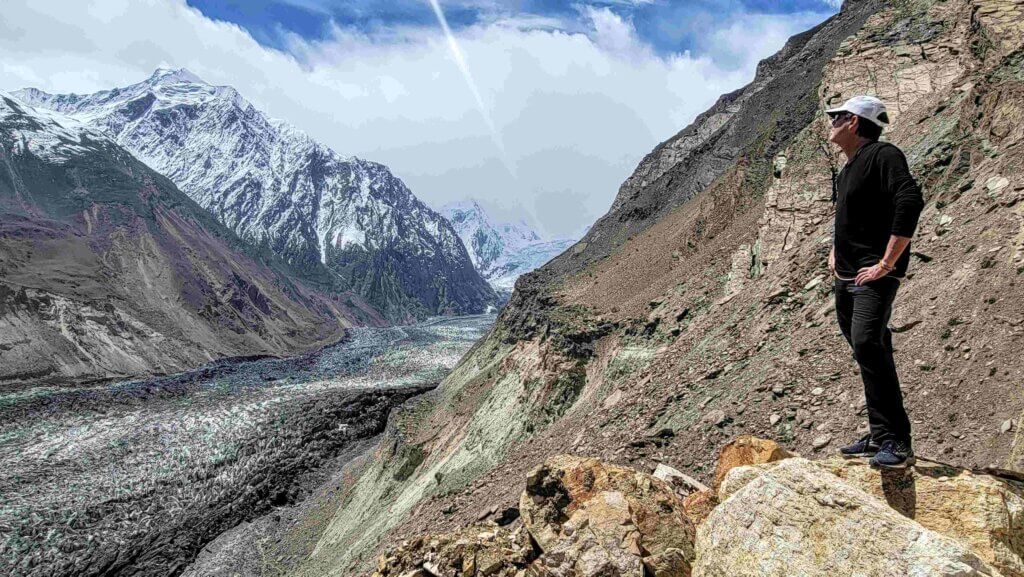
- Hopar Valley Tour; Glacier Trekking
- Altit Fort and Altit Village
- Eagle’s Nest View Point Duiker
- Overnight stay at Hill Top Karimabad
Altit Fort

Altit Fort is a 700-year-old fort located in the village of Altit, just a short distance from the town of Karimabad. Just like Baltit Fort, Altit was originally built by the Buddhists, and it was later expanded and portions were rebuilt by the Ismaili Mirs of Hunza.
Very much like Baltit Fort, Altit is also made of stone and wood. It is also located on a hilltop overlooking the Hunza Valley, offering stunning views of the surrounding mountains and glaciers.
The upper floors of the fort are reached by a series of wooden stairs and used to be home to the royal apartments, which are decorated with wooden carvings.
Hopper Glacier
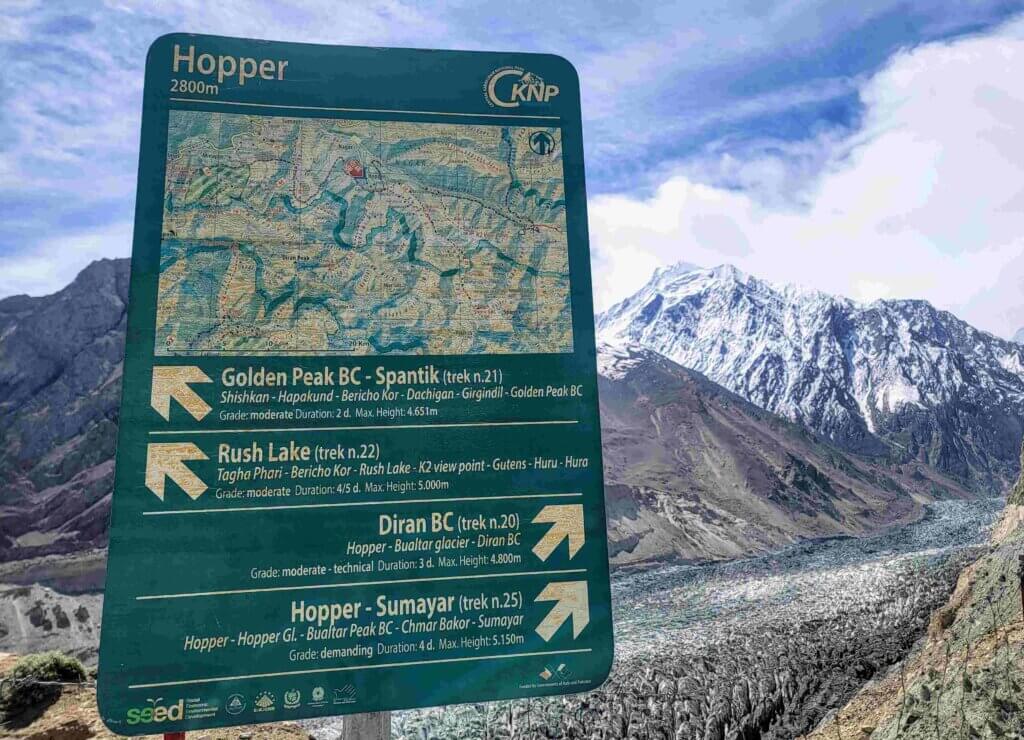
Hopper Valley is a gorgeous area surrounded by many snow capped peaks. There are a few hotels and restaurants around it offering hikers a place to start from.
The Rush Lake trek is the most popular one which starts hikers with crossing the Hopper Glaciers. This trek takes 4 – 5 days to complete.
PRO TIP: If you want amazing organic “french fries” – the Hunza Valley version (which are large deep fried potato chunks), the Hilton Hotel (no not that Hilton) has fantastic ones.
DAY 3 KARIMABAD – ATTA ABAD LAKE – GILGIT
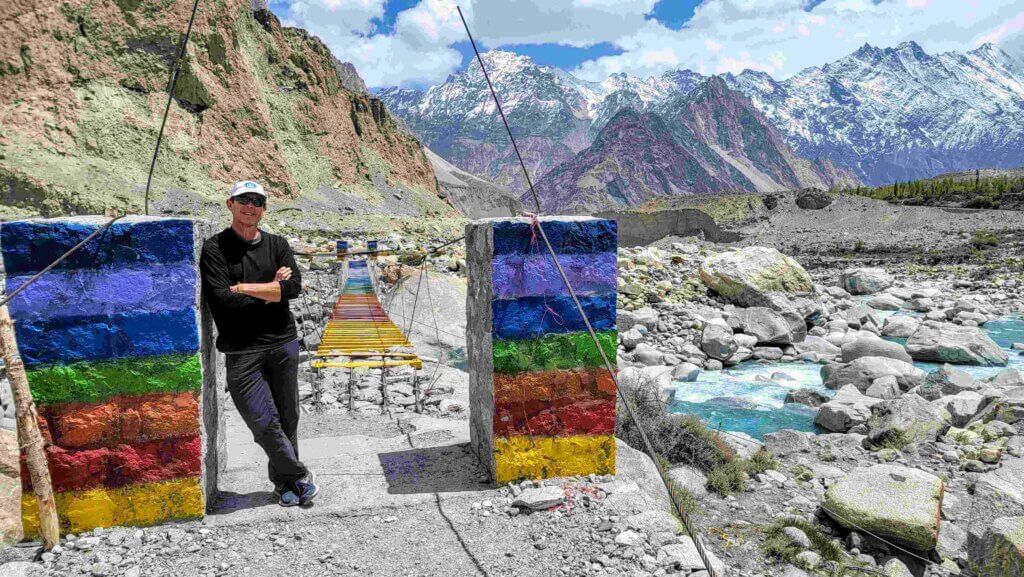
- Stop at Atta Abad Lake
- Visit Gulmit
- Visit Hussain Bridge
- Visit Rainbow Bridge
- Visit Passu Village
- Passu Peak and Shishpare
- Peak view point
- Passu Cones View Point
- Batura Glacier View Point
- Borith Lake
- In the afternoon drive back to Gilgit (3 hours)
- Overnight stay at Kallisto Resort Gilgit
Atta Abad Lake
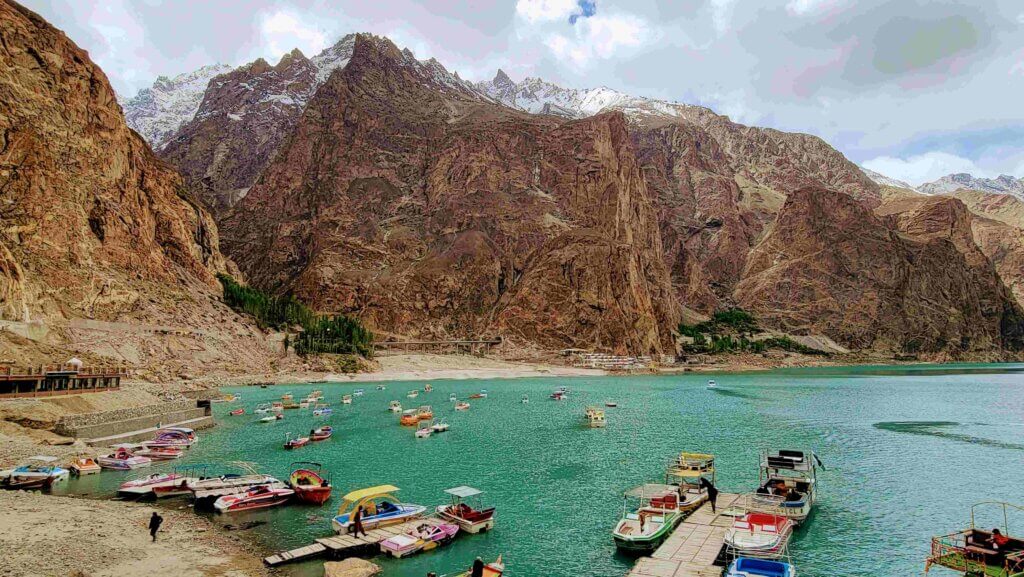
Atta Abad Lake is a majestic body of water which was created in 2010 when a landslide blocked the Hunza River. The lake is about a 30 minute drive from Karimabad and is now one of the most popular tourist destinations in the Hunza Valley.
Many water activities are available here including boating, fishing and jet skiing. There are a number of hiking trails that lead to the lake, with the opportunity to just relax or picnic on the shore.
Passu Cones and Village
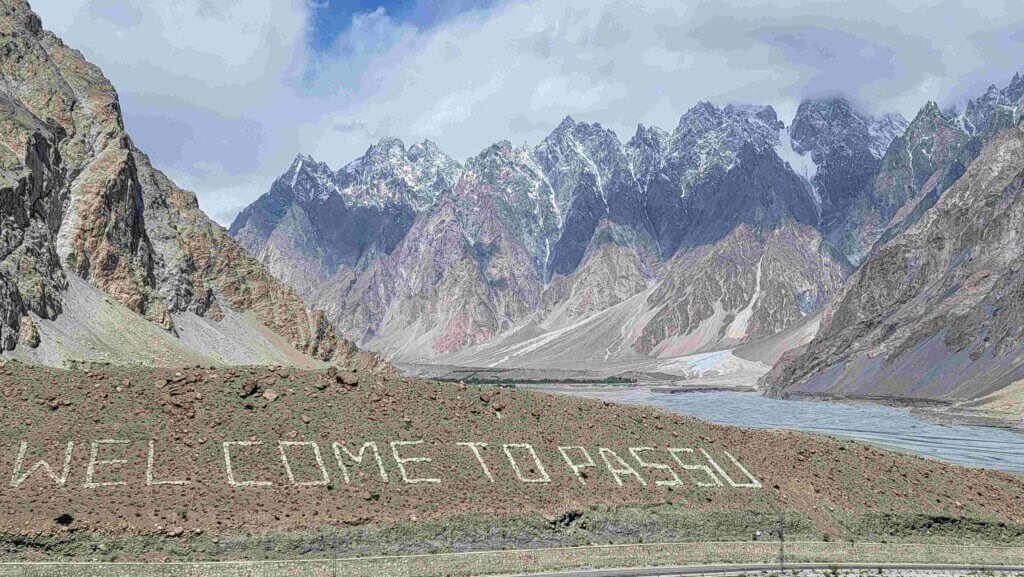
In the Upper Hunza Valley is a village called Passu which is home to the Passu Cones (also known as Tupopdan). Tupopdan 6,106 metres (20,033 ft) also known as ‘Passu Cones’ or ‘Passu Cathedral’ is the most photographed peak of the region.
Borith Lake
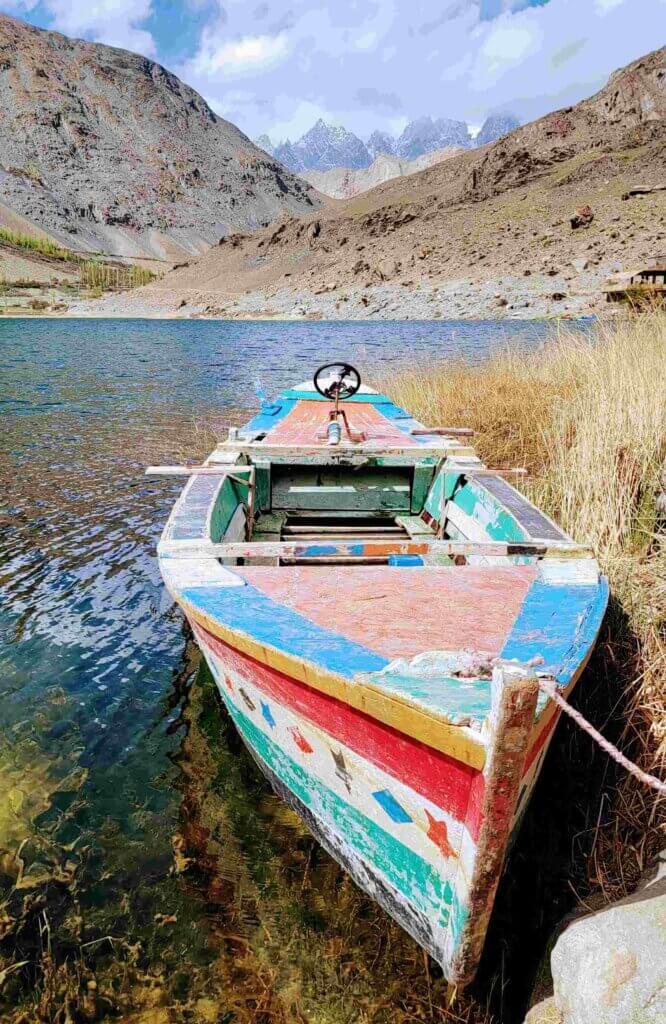
Driving up to the 2,600 meter elevation of Borith Lake is a bit slow and difficult. However, one can trek to this lake from Gulmit and the hike is 2-3 hours depending on your speed. At the top, there is a lovely restaurant called Borith Lake Hotel & Resort that cooks delicious local food. They even made me vegan vegetable fried rice! The vibe is really laid back and chill.
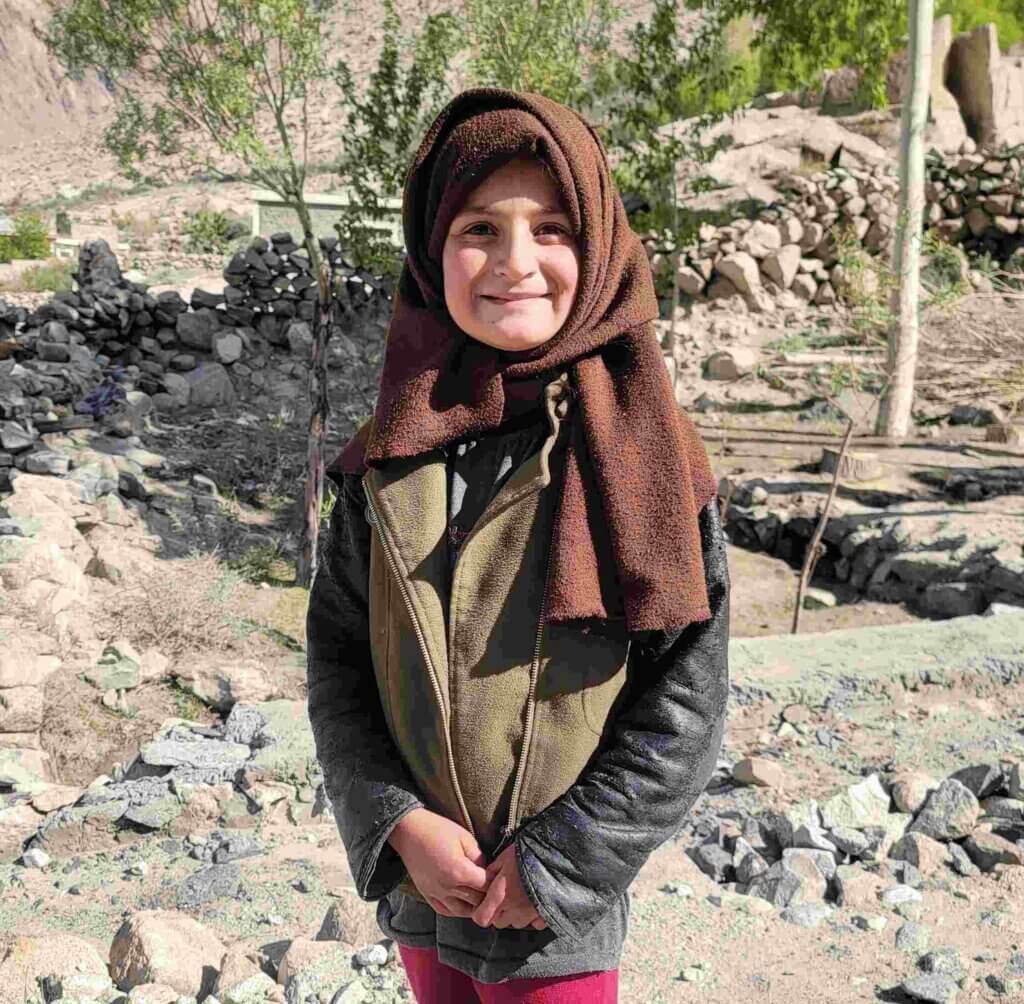
As I was running down the mountain a young girl saw me and ran out of her hut to say hello and to kiss my hand (a local Ismaili tradition to greet someone).
Day 4 GILGIT – ISLAMABAD
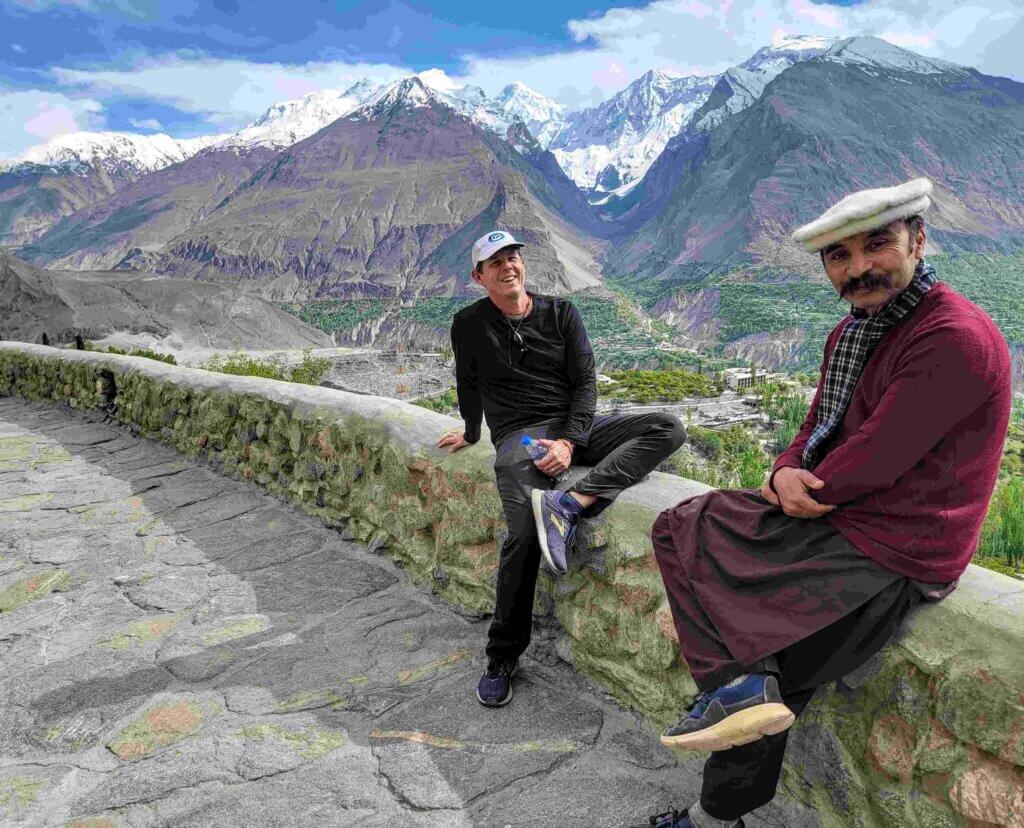
The original plan was to fly to Islamabad, and we had our flight booked for 7:45 am. However the night before, as we were falling asleep, in our hotel in Gilgit the news came that the flight was indeed cancelled. Our amazing guide Ilyas scrambled through the night and got us a car and driver to take us back early in the morning.
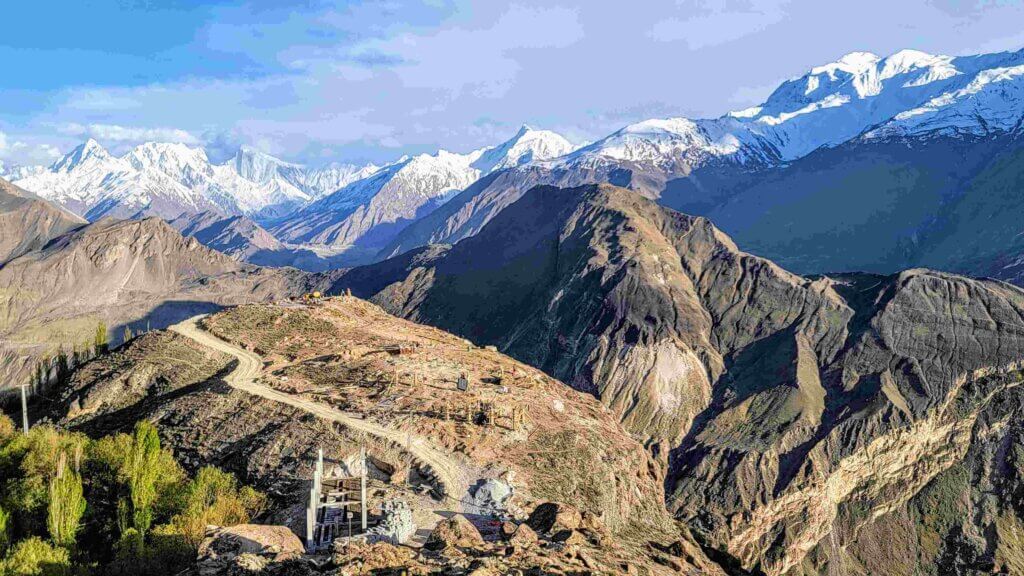
Heading out of Gilgit, we continued to drive along the famous Karakoram Highway, which happens to be one of the highest paved roads in the world. A lot of it is currently under construction, making it a difficult road to navigate at the moment.
Then we drove past the 3 Mountains Junction Monument and Viewpoint. This is a rare place on earth where three immense mountain ranges meet. It’s mesmerizing to witness the almighty Himalayas, Karakorams and Hindu Kush standing in front of you with the Gilgit River connecting with the powerful Indus River all in one view.
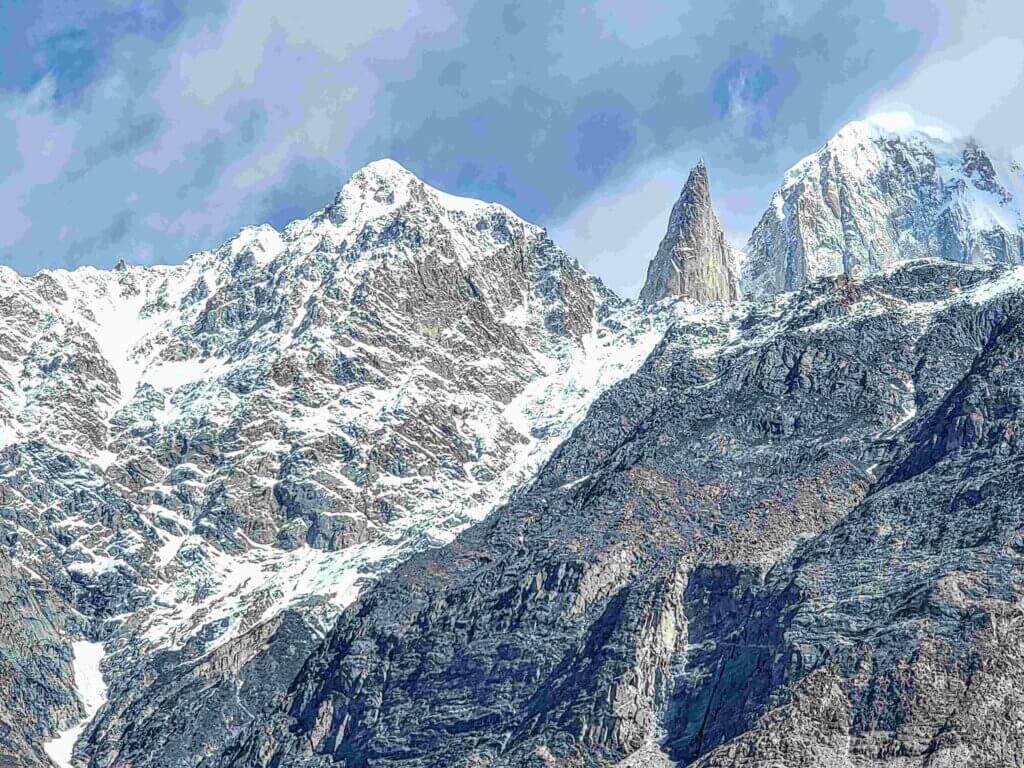
Our journey continued along the Indus River, offering stunning views of the various mountain peaks. One vista was more spectacular than the next. Along our drive we passed through the Lulusar-Dudipatsar National Park as the car carefully hugged the narrow road above the cliffs and the river raging below us.
Many waterfalls came into view, one after another, including: Kewai and the Double Waterfalls.
Religion – Buddhism to Ismaili

The history of religion in Hunza Valley is long and complex. The valley was originally inhabited by Buddhists, but it was later converted to Islam by the Ismailis. The Ismailis are a branch of Shia Islam, and they are known for their unique beliefs and practices.
For instance, unlike other Shias, they only pray twice per day (not 5 times) and men and women pray together. In addition, there is 100% literacy among them.
Baltit Fort and Altit Forts were both originally built by Buddhists. In addition, the area has giant Sacred Rocks which are some of the earliest sites of Petroglyphs along the ancient silk route. It is a cultural heritage site with the Buddhist carvings on the rocks dating back to the 1st Millennium AD.
Mohan People

Along the Karakorum Highway flows the Hunza River and once in a while you will see large tarp cream color tents along this and some of the other rivers of the Valley. These tents belong to the Mohan People, who are a nomadic tribe that exists by panning for gold. Unfortunately their children do not go to school and ultimately are illiterate.
When we passed by, the children ran over to beg us for money. Our guide suggested that it would be best to come back with some cookies or sweets instead of the money. Which we did.
Wrap Up – Things to do in Hunza Valley
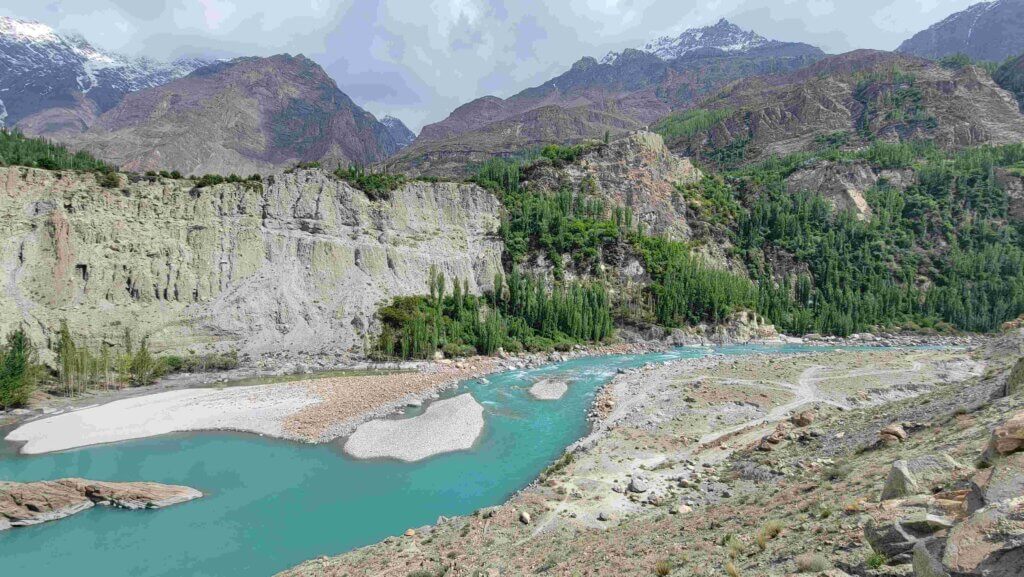
These 4 days in Hunza Valley, in the Northern part of Pakistan were incredibly memorable. Between the stunning nature, unforgettable people and culture, it has become one of our 10 favorite places in the world so far!
The gentle and welcoming people of the Valley will stay in our hearts forever. And Ilyas our incredible guide is now someone that we consider a friend.
Have you been to this area of the world? What did you think? We would love to hear your thoughts in the comments.

